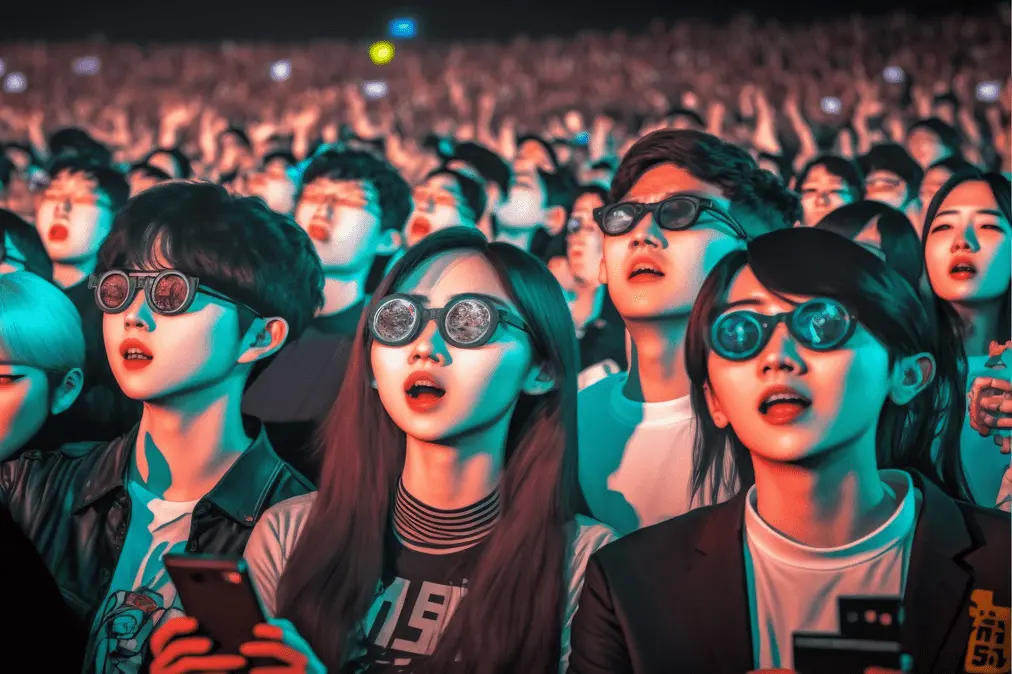
South Korea is truly a social media paradise–it is an incredibly connected country. They boast some of the highest internet speeds in the world, averaging at 26 mbps, and over 50 million people have access to it. This technologically advanced nation has fully embraced the virtual world, with one of the highest social media penetration rates globally.
There are over 47 million South Korean social media users, which totals to 92% of the country’s entire population. This high level of engagement is attributed to the wide range of activities that can be done on social media, ranging from following celebrities to participating in online shopping. In addition, South Koreans are also known to use social media to express their opinions on current affairs and topics of public interest.

This high social media usage in the country has surely led to new cultures and practices inside the community. As marketers and business owners, you must be able to pinpoint the cultural differences in each country in order to effectively expand. Social media is a complex ecosystem filled with nuanced populations. There isn’t a universal solution for creating marketing strategies that will impact all types of audiences.
In this article, we will help you understand the intricacies of social media culture in South Korea. These cultural insights will assist you in your social media marketing planning in a nation of intense users.
Social Media Culture Insights in South Korea ⬇️
1. Clash of the Social Titans: East vs West

Facebook and Instagram may be the go-to social media platforms in the West, but South Korean social media users are different. In South Korea, locally-developed applications are the “staple” outlets of the population for shopping, keeping in touch with their friends, following their idols, and expressing their opinions.
Two of the most-popular platforms in South Korea are KakaoTalk and Naver. KakaoTalk is a messaging app that allows users to send messages, make phone calls, and share media, while Naver is a search engine that also offers its own social networking services. Both platforms are extremely popular in South Korea, with Naver boasting over 886 million monthly visits and KakaoTalk having over 48 million monthly active users in 2023. These platforms are not just used for socializing, but also for commerce, with users being able to purchase products and services directly on the sites.
South Koreans also enjoy western social media platforms such as YouTube, Messenger, and Twitter, though these are not as popular as the two natively Korean services. Other eastern social media platforms in the country are TikTok, Line, and Snow. Line is another messaging software which was developed in Japan, while Snow is a camera app which allows users to select filters and improve their selfie games. TikTok, on the other hand, is a short-form video platform developed in China, but it has now reached global heights.
2. Fan Frenzy: Understanding Fandom Culture

If you’ve heard Korean musicians like Blackpink, BTS, or Exo, then we’re sure you’ve heard the word “fandom”. The term "fandom" is used to describe a group of people who are passionate about a particular artist or group. This could be a K-Pop group, a Korean actor or actress, or a Korean drama. Fans will often follow the artist or group on social media, attend events or concerts, and purchase merchandise.
In South Korea, fandom culture is prevalent, and fans often form tight-knit communities to show their support for their favorite artist or group. Fans will often join fan clubs, create fan websites and blogs, and participate in fan activities such as fan meetings and fan projects. The fandom culture has also dominated Korean social media. Fans will often post pictures and videos of their favorite artists and share news and updates about them.
Social media marketers use the fandom culture to their advantage. Companies often use fan-generated content to increase their reach and promote their products. After all, fans are the best advocates for their idols, and products recommended by these idols get the same trust and credibility. Fans are always the first to spread information about the celebrities they follow, including which brands and services they put the limelight on.
South Korea's fandom culture is a major cultural phenomenon, and it has become an important part of the country's economy, social media, and entertainment industry.
3. Respectful Communication: The Power of Honorifics

The most-used Korean language, Hangul, puts high value on dignity. This can be seen through specific use of honorifics in the language. Honorifics are words and phrases used to show respect when speaking to someone else.
In Korean, these honorifics are used to indicate the relationship between the speaker and the person being spoken to, and to show levels of formality and politeness. For example, the honorific prefix “-ssi” when addressing someone they do not know well, or the honorific suffix “-nim” when addressing someone they know more closely.
Honorifics are also used to refer to people of higher social status, such as teachers and elders. For example, the honorific prefix “-sunsaeng-nim” is used to refer to a teacher, while the honorific suffix “-halmeoni” is used to refer to an elderly woman. This use of honorifics is also seen in other forms of communication, such as social media, to show respect and politeness.
When brands enter Korea, they must keep in mind that English proficiency in the country is moderate, and most of the population still prefers to use Hangul. Localization of marketing efforts is a must even on social media. This information is also useful to know when communicating with South Korean influencers for marketing collaborations.
4. The Art of Implication: Navigating Indirect Communication

It has been established that South Korean culture has a different communication style. This can also be seen by the nation’s use of indirect communication, far from the straight-to-the-point messaging in Western countries.
Koreans prefer to emphasize the relationship between the speaker and the listener, by being polite and indirect in their speech. This has been described as communicating “around” a subject, instead of directly addressing it. As such, Koreans will often avoid saying “no” or directly disagreeing with someone, and instead use more subtle means of communication, such as body language or hints in their speech. Koreans will also often use a high-context communication style, which means that the listener is expected to interpret the speakers’ implicit meanings.
This type of communication is also prevalent in South Koreans' social media interactions. Koreans often use subtle forms of expression, such as emoticons and emojis, to communicate their feelings in messages. This allows them to express their true feelings without having to directly say them.
Social media marketers are aware of this culture, which makes them tailor-fit certain brand messages around it. They create campaigns that focus on creating an emotional connection with the audience, as opposed to emphasizing the product itself. Just take a look at this Instagram campaign from Discovery.
Discovery wanted to promote its outdoor clothing brand and premium lifestyle without using a “buy me” messaging style. Discovery collaborated with several Instagram influencers who can promote the product through storytelling, and through highlighting their adventurous experiences.
5. Live and in Action: The Rise of Live Streaming
Live streaming is popular worldwide, but it is all the rage in South Korea. Statistics have shown that 8 out of 10 South Koreans have used a live streaming platform in 2018. Popular live streaming platforms in the country include KakaoTalk, WeChat, and V Live.
Social media users in Korea frequently watch and comment on live streams featuring popular influencers and gamers. Live streaming offers an interactive way for viewers to engage with their favorite content creators and have their comments seen and responded to in real time.Social media users are also known to use live streams to promote their businesses, raise funds, and provide product or service demos.
Live streaming is not just for show-and-tell–real-time consumer purchases, virtual gifts, and adverts are used to generate revenue through this form of content. Live streaming and the fandom culture are power combos for social media marketers. During the COVID-19 pandemic, numerous influencers have collaborated with companies by being the face of the brand in live streams. In turn, the fans of these social media stars were exposed to the content, increasing brand awareness and recall.
Conclusion
South Korea is a web of cultures, both in real life and on social media. With the intensity of internet usage in the country, there’s no wonder why various practices, beliefs, and cultures have formed in the webspace.
This information is a must-know for brands wanting to enter the market. A company cannot just march in a complex country while using traditional and western advertising methods. Social media marketing and messaging in South Korea is different from the rest of the world. In order to effectively communicate with the population, one must be aware of their specific social media culture.
We hope this article has helped you understand the intricacies of South Korean social media.
Contact Us
AJ Marketing | Unlock the Power of Influence
